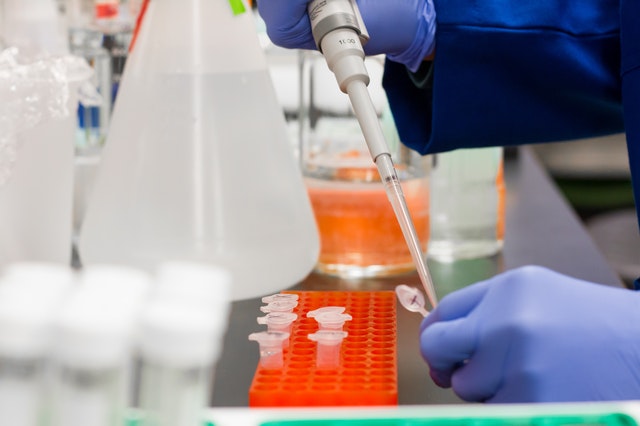Bi-directional Instruments

Bi-directional instruments function in both ways where you can add machine-readable labels like bar codes to your samples and allow instruments to scan them for processing.
The information that each bar code carries, acts as a command to the software using which a request is sent to the software. The software then reads the request and reverts about the corresponding test(s) to be performed.
Following that, relative test values are then automatically fetched and results are added into the system software.
Uni-directional Instruments

Offering a single way of communication, uni-directional instruments require you to manually enter test details after sample placement.
Soon after processing, the instrument auto-fetches relative data and inputs result back to your LIMS.
If analysers are incapable of bi-directional interfacing, you can always opt for unidirectional.

About Us
Vittenex Technologies Private Limited is an Information Services & Technology Company with professional experience, providing software consultancy and solutions to cover the entire continuum of lab related results from LIS to LIMS and vice versa with integration of different analyzer types like VITROS, ROCHE, BECKMAN, ABBOTT, SYSMEX, HORBIA, ELECTROLYTES etc...
We are involved in several protocols to integrate the lab equipment, of which healthcare is our primary focus.
What We Do?
Our software applications are powerful, flexible, and scalable to meet the needs of any other HIS information. We have always been innovators and pioneers, working with great leaders.
Our success comes from the continuous faith in the excellence of our products and services, something we are committed to and would never sacrifice.
We always strive to exceed our customer's expectations and meet their requirements.

Services
We are providing services including Interface and Inventory.

Lab Equipment Interfacing
Effective integration of laboratory equipment is crucial to improving the productivity and efficiency in a hospital's laboratory environment. Integration of laboratory equipment with LIS was once a daunting task, until recent years with the development of laboratory equipment. With Vittenex advanced Lab Link application, equipment integration is very reasonable and doable undertaking. The bottom line is that the LIS implementation project should include a prioritized plan to integrate as many laboratory equipments with the system.
Effective Instrument Utilization Increases Productivity
Interfaced systems allow effective utilization of instruments to improve sample analysis. While system integration enhances functionality, auto-entering results in LIS saves the need for manual entries, reducing confusion and redundancy of work for the staff. Reduced manual interference significantly decreases staff efforts and offers them more time to help patients. Such repurposing of resources in a refined manner enabled with increased process efficiency leads to better productivity at operations.


Deliver Results Faster with Shorter TAT
Complete automation of sample analysis procedure minimizes time to generate results as compared to the traditional way of processing. Going with the right type of interfacing tool for your machine helps boost the entire process cycle; thus reducing the turnaround time. Consequently, reduced efforts with improved work rate enable you to process more samples per day and deliver reports faster than before
The technological advancement in lab analyzers has led to an increase in operational throughput and a substantial rise in data volume. While we use updated technologies, we also need innovative methods for handling such high data volume and samples; with a view towards enhancing the quality of service and increase business productivity
Laboratories today have switched to automated solutions like LIMS to manage operations and efficiently utilize such huge volume of data throughout all processes. However, for complete lab automation and integration, machine interfacing is highly needed and hence, you must consider it with Laboratory Information Software. And, that’s not the only advantage of using interfaced machines. The systematic collaboration of all equipment with medical laboratory management software adds more profit to your enterprise. Before you interface your systems, know what role it plays and which type fits best for your industry
Inventory Management
If you’re in the process of just starting out in retail or wholesale, you may be asking yourself “What is inventory management?” or “What is inventory control?”
Effective inventory management and inventory control are one in the same – and the definition is pretty simple to understand.
Inventory management refers to the process by which you track the amount of product you have on your warehouse shelf, in store or sitting with other retailers and distributors. This enables you to succeed in having the right number of units in the right place, at the right time and for the right price.
When effectively tracking and controlling your physical inventory, you’ll know how many of each item you have, when you might be running low on products and whether you should replenish that item in order to keep selling it.
And as a busy business owner, you should be able to do all of this at a glance. This enables you to make good purchasing decisions quickly and easily. It’s where having the correct inventory management system comes in, too, as we’ll learn later.













 Flat No.72, H.NO.303,3rd Floor,AvanthiNagarThota, MothiNagar, Hyderabad-500018.Telangana
Flat No.72, H.NO.303,3rd Floor,AvanthiNagarThota, MothiNagar, Hyderabad-500018.Telangana
